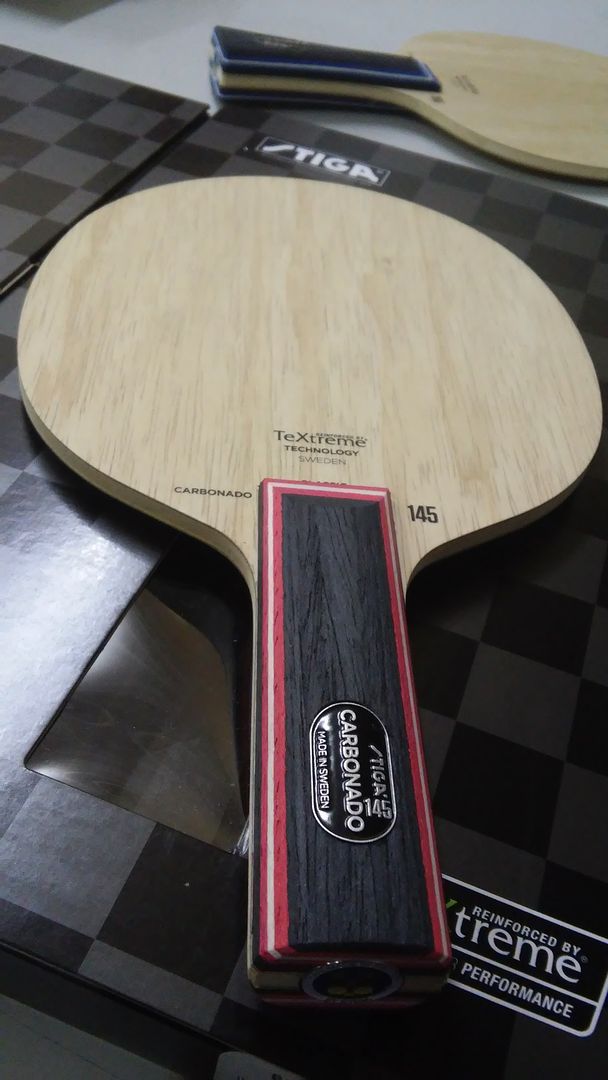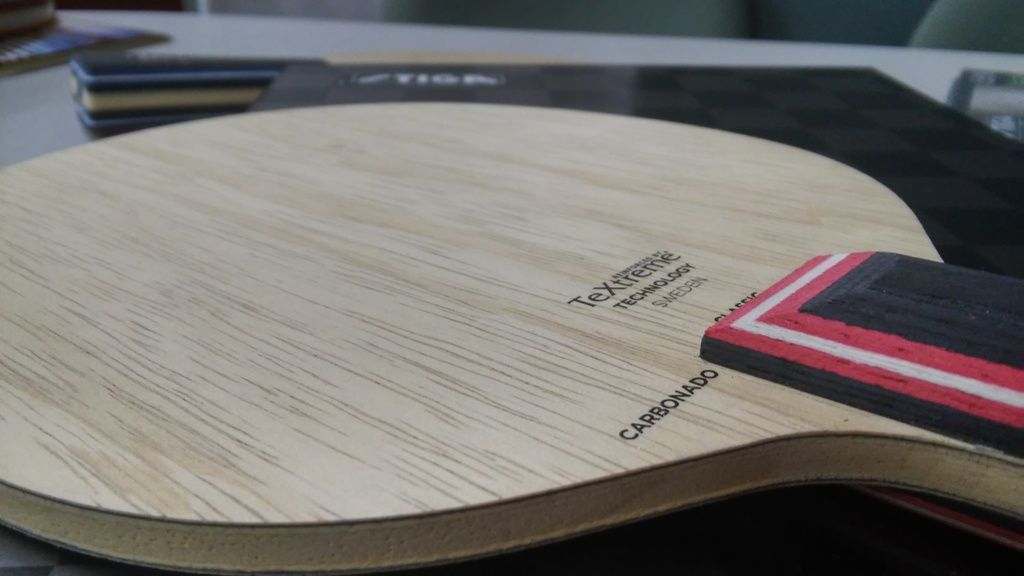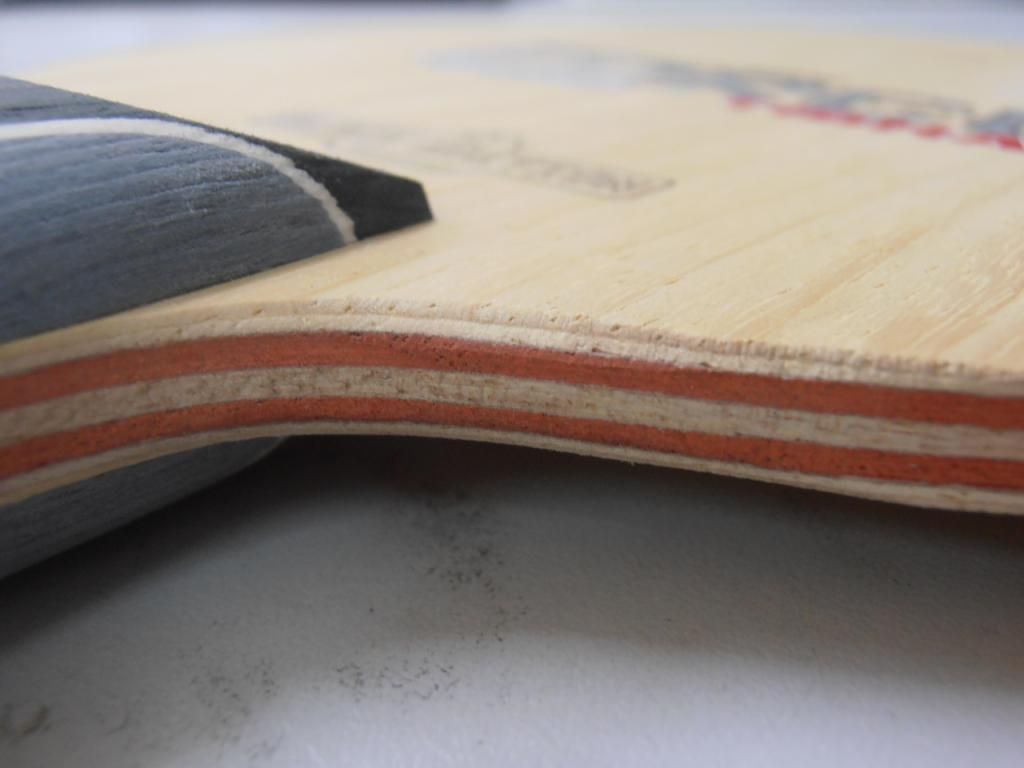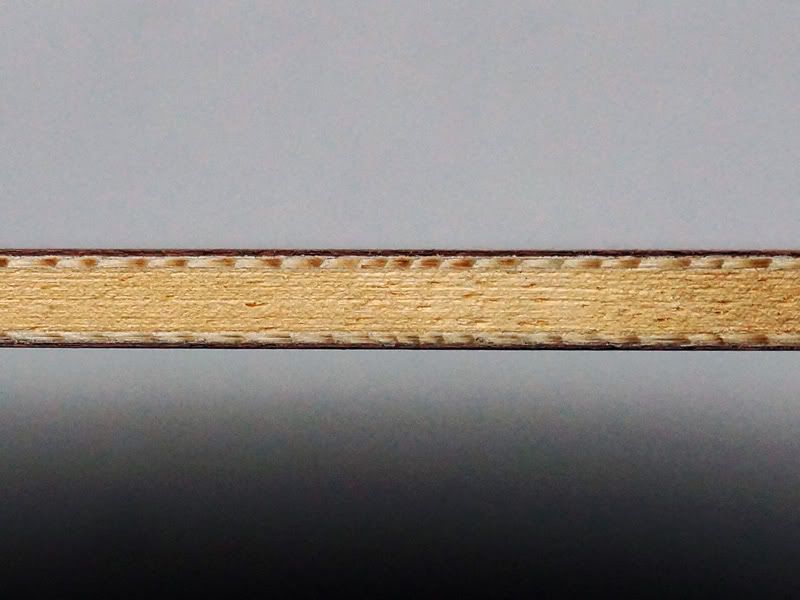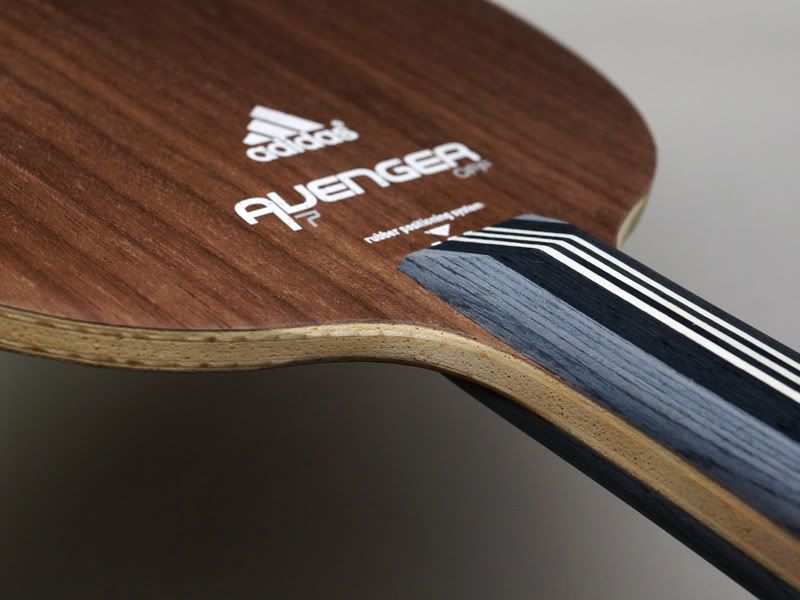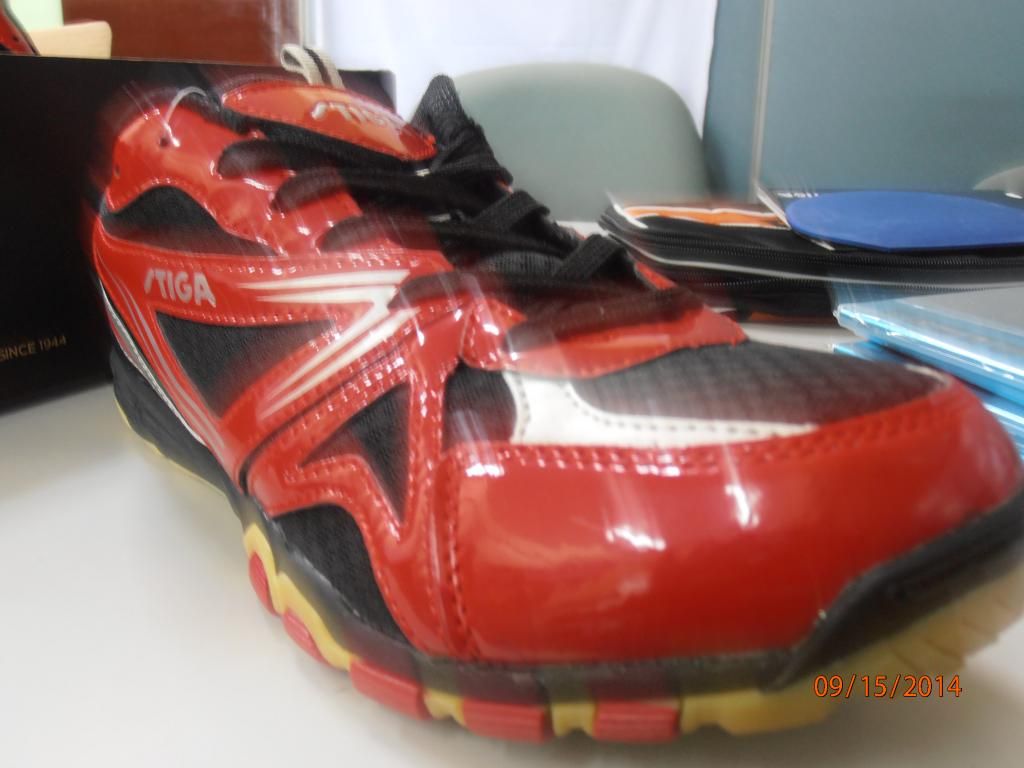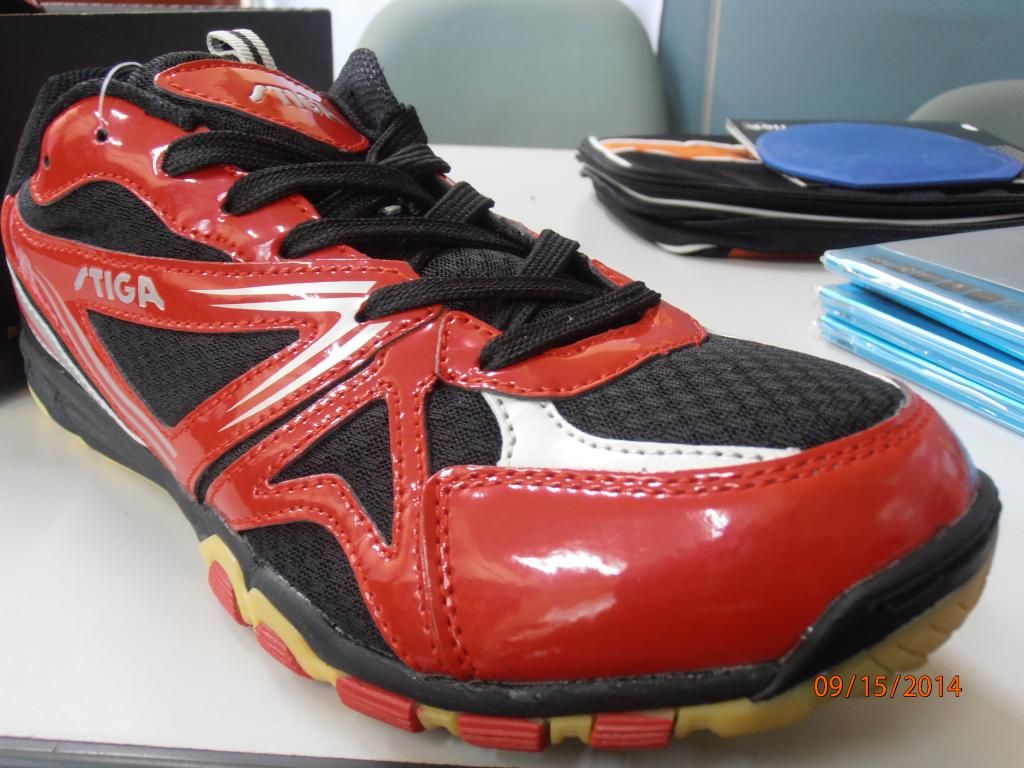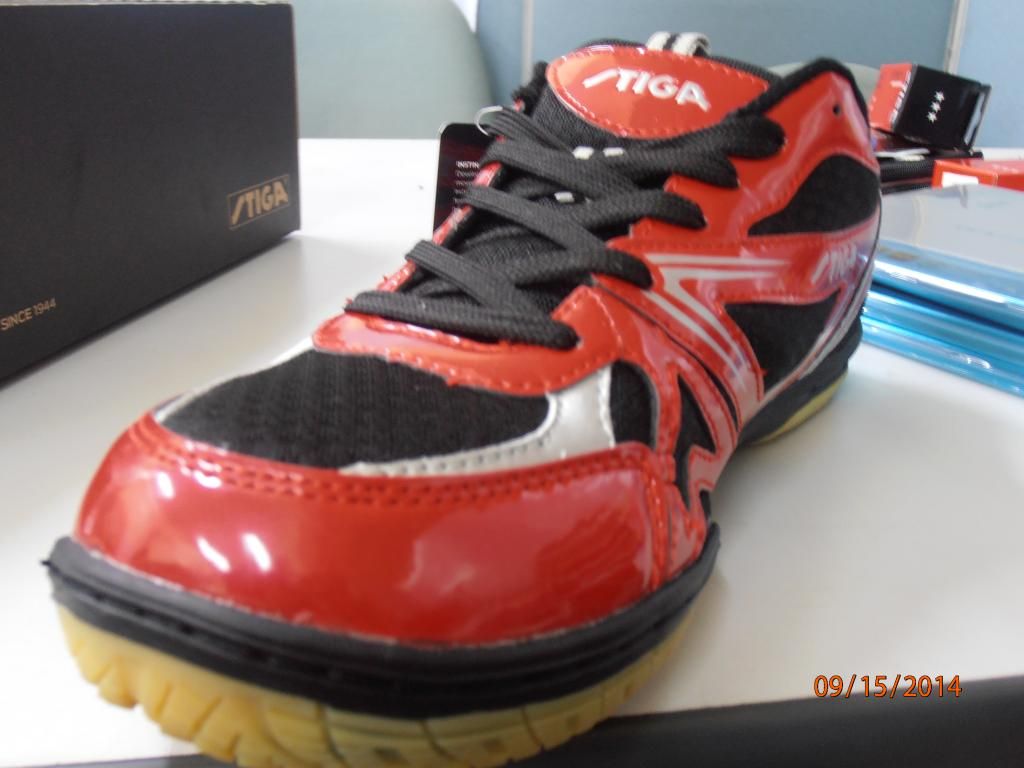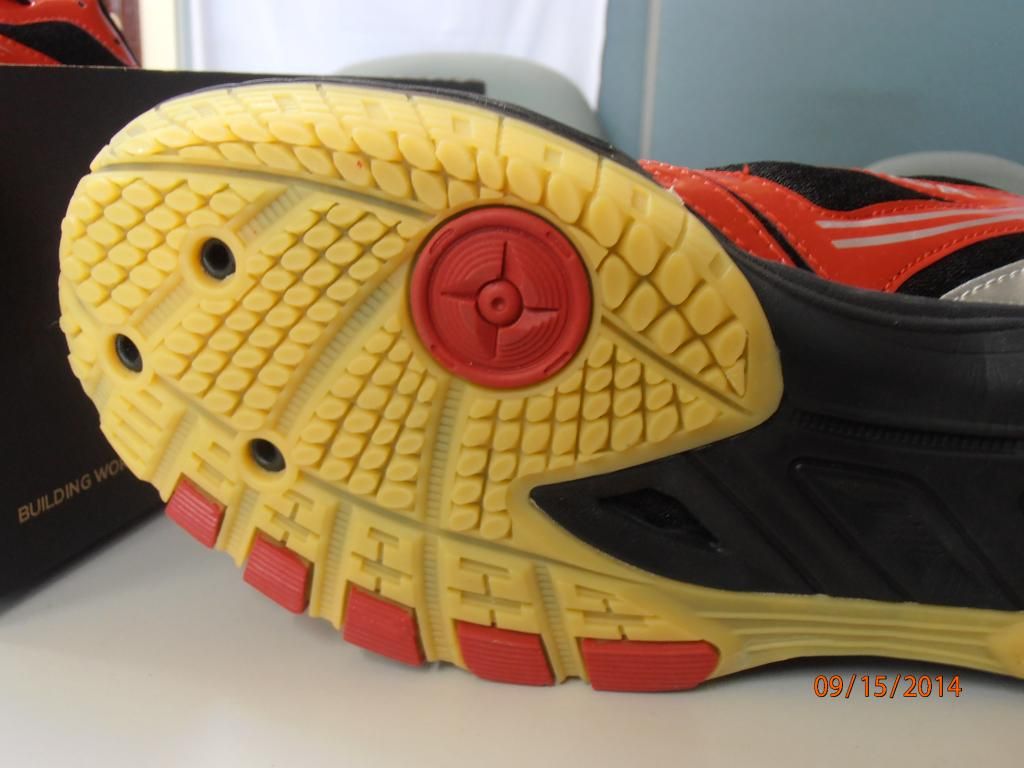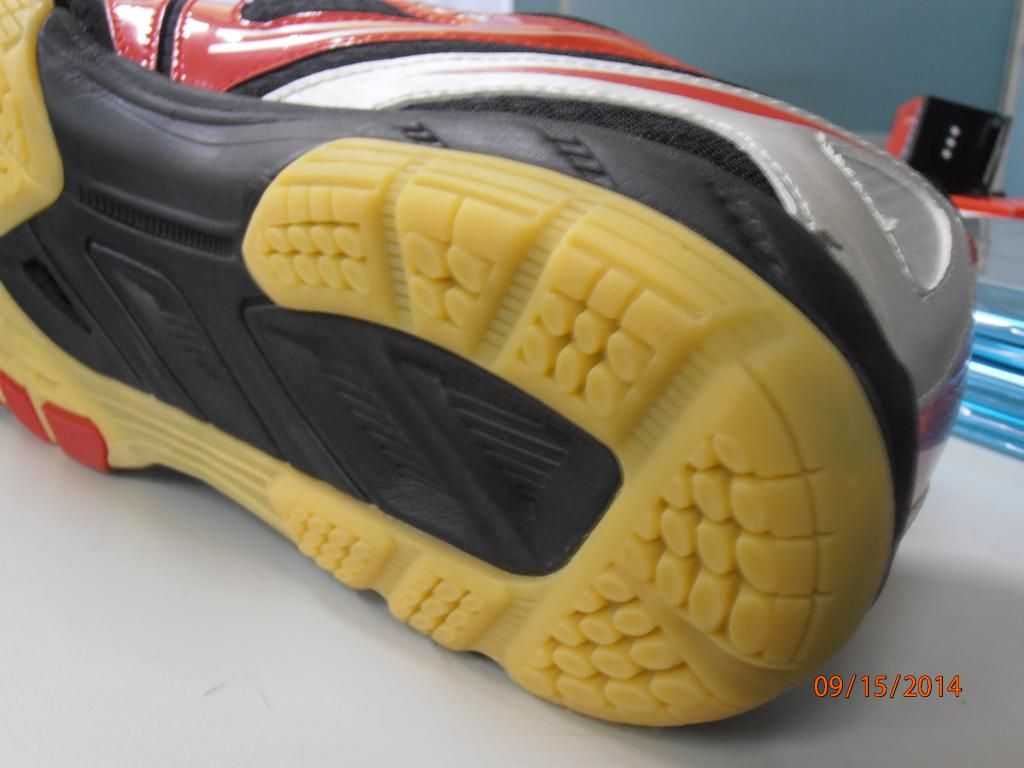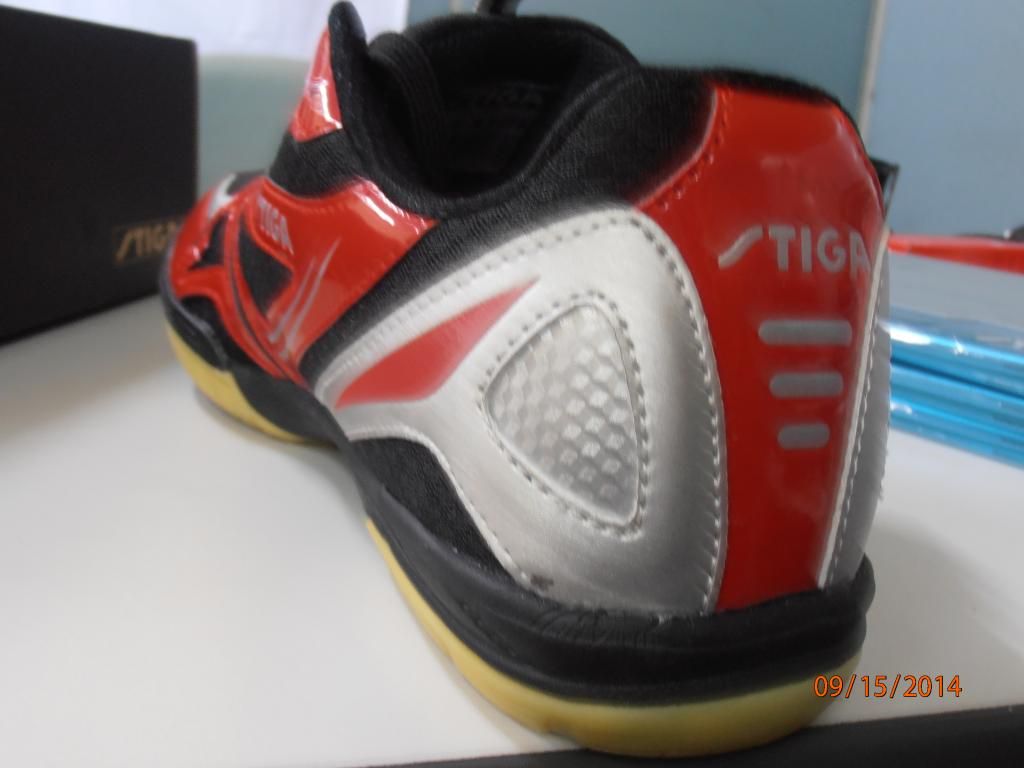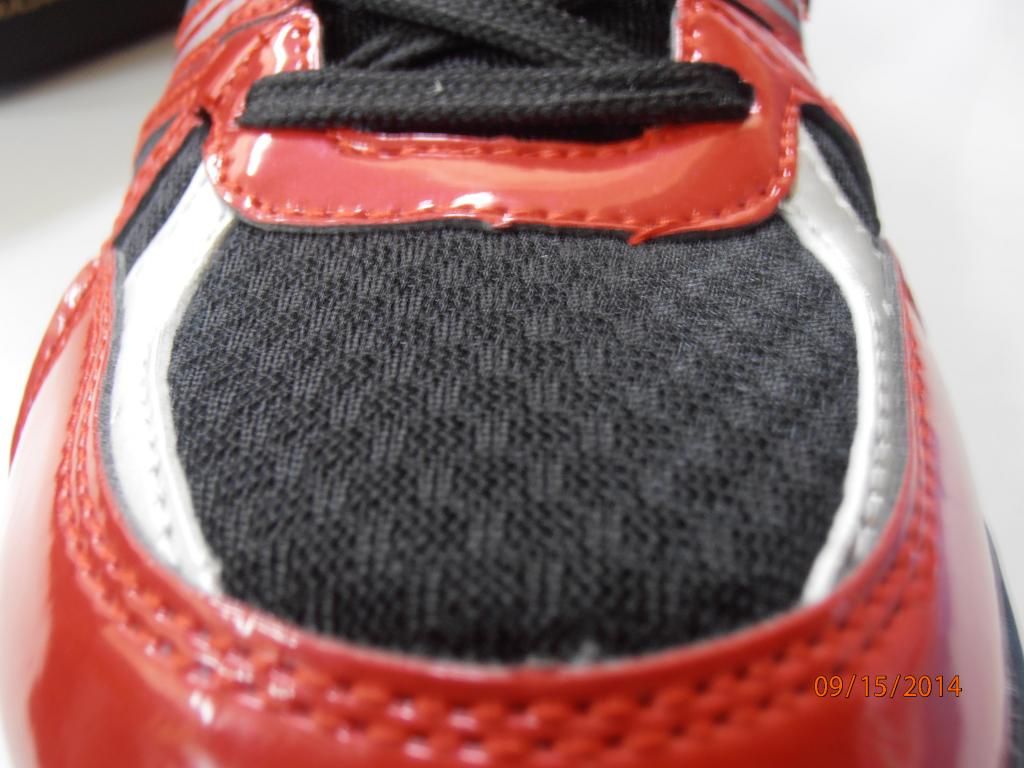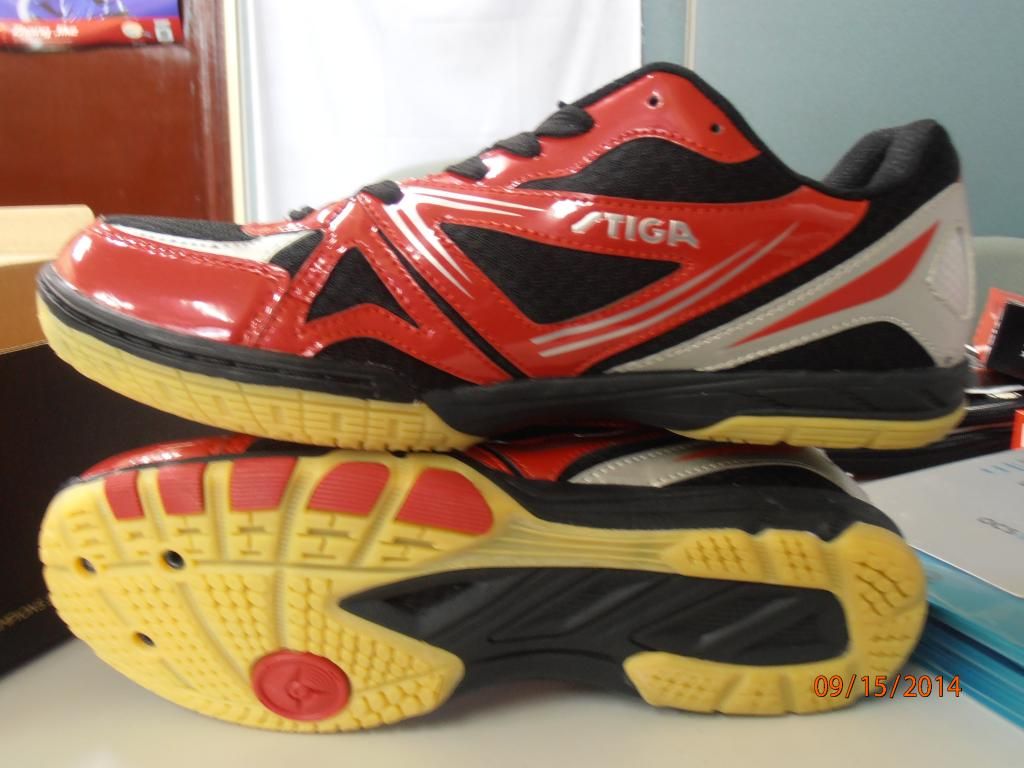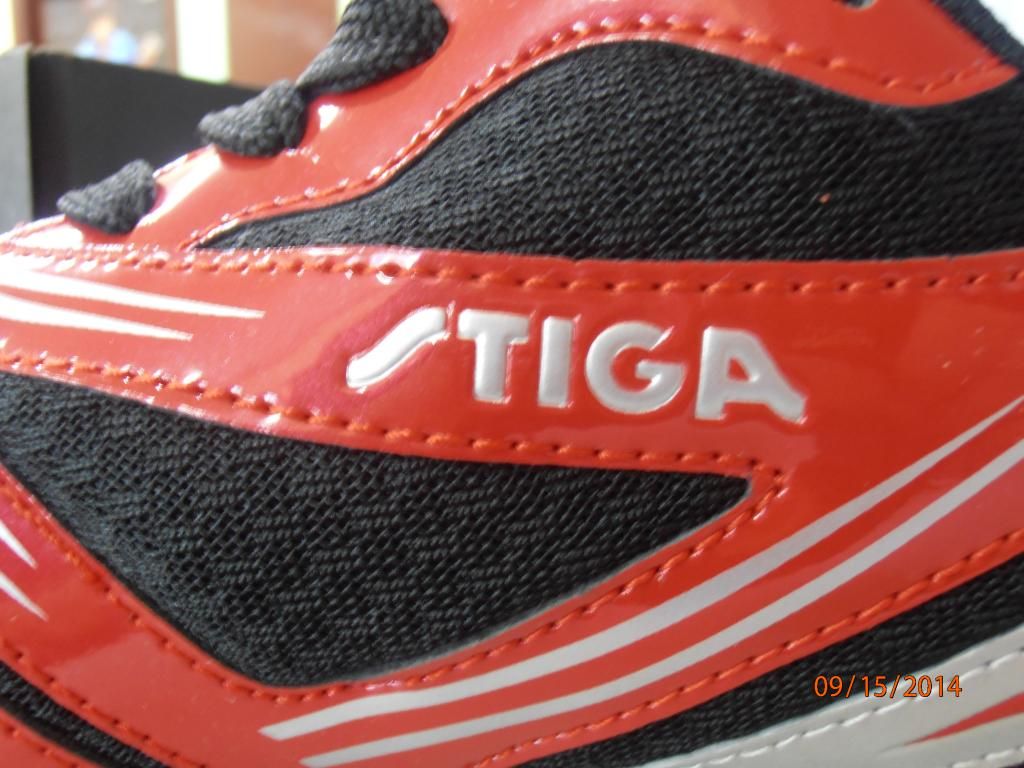Stiga Genesis S
Weight: 63 grams
Thickness: 2.0mm
Speed: Off
Firstly I just want to compare the Gensis S rubber against the Genesis M or similar rubbers which have the same rubber characteristics to the Genesis series. Both rubbers are lightly tacky and not ridiculously tacky like other tacky rubbers out there. The topsheet could pass as a euro topsheet on first look although it is a Chinese topsheet. I have seen a lot of Chinese rubber topsheets however the Genesis has the best quality Chinese topsheet I have seen on the market. It is even better quality than rubbers such as the Haifu which I have tested before. Someone has commented already that these rubbers have been made by DHS and are similar to the Tin Arc series by DHS. However it seems to me the Genesis rubber is a few notches higher in quality and performance because I have tried the Tin Arc previously and it definitely feels more responsive. The marks where the sponge is cut is a giveaway on who made and produced the rubbers. The sponge are more porous than the DHS Hurricane rubbers. The pores on the Genesis are larger. Between the two sponges the Genesis S is 45 degrees and the Genesis M rubber is 47 degrees. The topsheet on both of the Genesis are medium to soft and not as hard as the DHS Hurricane rubbers.
Speed
The Genesis S 2.0 is fast. The M version is fast and bouncy and feels similar to a Euro rubber instead of a Chinese rubber. In comparison to other Stiga rubbers the Genesis seems as fast as a Calibra LT Sound but with a harder feeling. The M version of the Genesis series is definitely faster than Calibra Spin. Comparing the Genesis against other brands the Genesis S and M are both faster than the DHS Tin Arc rubbers and I would put the speed on similar levels to the Donic Acuda S2. I think the Genesis is faster than the Acuda S2 but slower than the Airoc Astro or Tibhar Evolution MX-P for example.
Spin
Out of all the modern rubbers by Stiga this is the spiniest I have ever tried. The S version has a low arc when spinning and the M version has a higher arc. Both produce a long trajectory. Comparing the spin produced on the Genesis to other brands I would say the Genesis M is a bit lower in spin to a Hurricane 3 or Tenergy 05 however it is as spinny as MX-P or Joola rubbers like the Rhyzm. I have played with the Tin Arc rubbers and the M version and to some extent the S version are a notch higher in spin. The top sheets on the Genesis feel more 'grippy' than 'tacky'. The S version can be spinny but requires more dig and bite into the sponge to produce high levels of spin. The M version requires minimal brush and will produce a great amount of spin. The Genesis series have a lesser sensitivity to spin in comparison to other Chinese and Euro rubbers.
Overall performance
Overall, I think it is a good move by Stiga to produce fantastic rubbers like the Genesis. Both the S and M version are good for smashing but the S does seem more suited for hard carbon blades. The S version I was a bit picky on what to use it with, it works very well close to the table. Whilst many people like having Chinese type rubbers on the forehand I prefer the S version on my backhand because it makes blocking and punch blocks with ease. The Genesis S is very controllable and great for touch and drop shots as expected with the Chinese based rubber.
I will try to review the 2.1 version in the near future because I would like to feel the rubbers speed at is fullest. I would also be interested if Stiga would try using the sponge from Airoc and the topsheet of the Genesis, this would be one complete rubber for attacking and spinning. The airoc sponge itself is a super sponge that is very fast but light at the same time.
If we compare the Genesis rubber to the Butterfly Tenergy 05 I would say, it's still a few notches below but the m version is already fast at 2.0mm. Spin is greater than some ESN rubbers but lower than T05.
Pictures from the Review:



Weight: 63 grams
Thickness: 2.0mm
Speed: Off
Firstly I just want to compare the Gensis S rubber against the Genesis M or similar rubbers which have the same rubber characteristics to the Genesis series. Both rubbers are lightly tacky and not ridiculously tacky like other tacky rubbers out there. The topsheet could pass as a euro topsheet on first look although it is a Chinese topsheet. I have seen a lot of Chinese rubber topsheets however the Genesis has the best quality Chinese topsheet I have seen on the market. It is even better quality than rubbers such as the Haifu which I have tested before. Someone has commented already that these rubbers have been made by DHS and are similar to the Tin Arc series by DHS. However it seems to me the Genesis rubber is a few notches higher in quality and performance because I have tried the Tin Arc previously and it definitely feels more responsive. The marks where the sponge is cut is a giveaway on who made and produced the rubbers. The sponge are more porous than the DHS Hurricane rubbers. The pores on the Genesis are larger. Between the two sponges the Genesis S is 45 degrees and the Genesis M rubber is 47 degrees. The topsheet on both of the Genesis are medium to soft and not as hard as the DHS Hurricane rubbers.
Speed
The Genesis S 2.0 is fast. The M version is fast and bouncy and feels similar to a Euro rubber instead of a Chinese rubber. In comparison to other Stiga rubbers the Genesis seems as fast as a Calibra LT Sound but with a harder feeling. The M version of the Genesis series is definitely faster than Calibra Spin. Comparing the Genesis against other brands the Genesis S and M are both faster than the DHS Tin Arc rubbers and I would put the speed on similar levels to the Donic Acuda S2. I think the Genesis is faster than the Acuda S2 but slower than the Airoc Astro or Tibhar Evolution MX-P for example.
Spin
Out of all the modern rubbers by Stiga this is the spiniest I have ever tried. The S version has a low arc when spinning and the M version has a higher arc. Both produce a long trajectory. Comparing the spin produced on the Genesis to other brands I would say the Genesis M is a bit lower in spin to a Hurricane 3 or Tenergy 05 however it is as spinny as MX-P or Joola rubbers like the Rhyzm. I have played with the Tin Arc rubbers and the M version and to some extent the S version are a notch higher in spin. The top sheets on the Genesis feel more 'grippy' than 'tacky'. The S version can be spinny but requires more dig and bite into the sponge to produce high levels of spin. The M version requires minimal brush and will produce a great amount of spin. The Genesis series have a lesser sensitivity to spin in comparison to other Chinese and Euro rubbers.
Overall performance
Overall, I think it is a good move by Stiga to produce fantastic rubbers like the Genesis. Both the S and M version are good for smashing but the S does seem more suited for hard carbon blades. The S version I was a bit picky on what to use it with, it works very well close to the table. Whilst many people like having Chinese type rubbers on the forehand I prefer the S version on my backhand because it makes blocking and punch blocks with ease. The Genesis S is very controllable and great for touch and drop shots as expected with the Chinese based rubber.
I will try to review the 2.1 version in the near future because I would like to feel the rubbers speed at is fullest. I would also be interested if Stiga would try using the sponge from Airoc and the topsheet of the Genesis, this would be one complete rubber for attacking and spinning. The airoc sponge itself is a super sponge that is very fast but light at the same time.
If we compare the Genesis rubber to the Butterfly Tenergy 05 I would say, it's still a few notches below but the m version is already fast at 2.0mm. Spin is greater than some ESN rubbers but lower than T05.
Pictures from the Review:






















